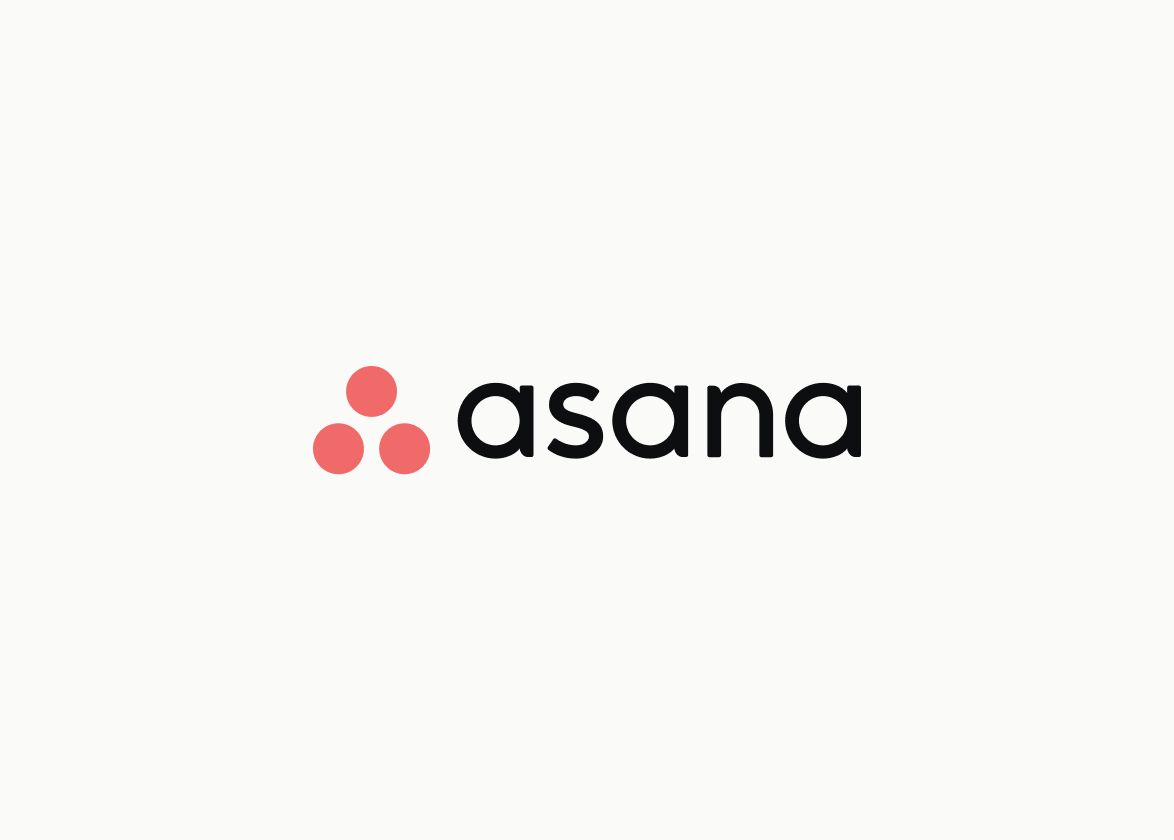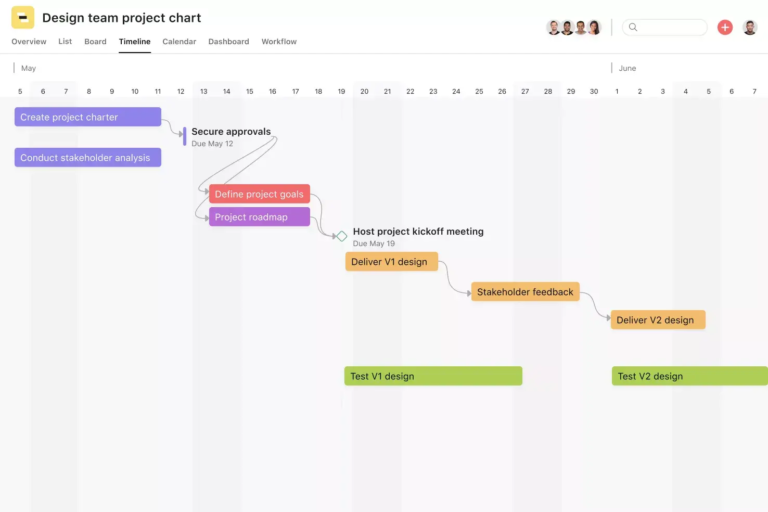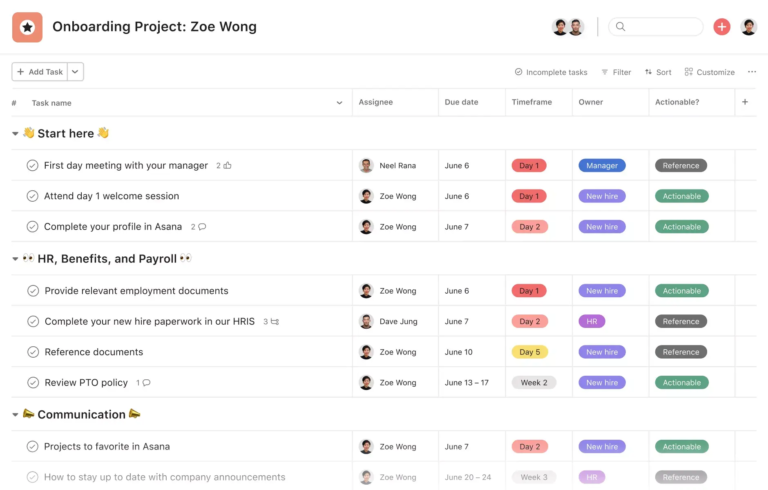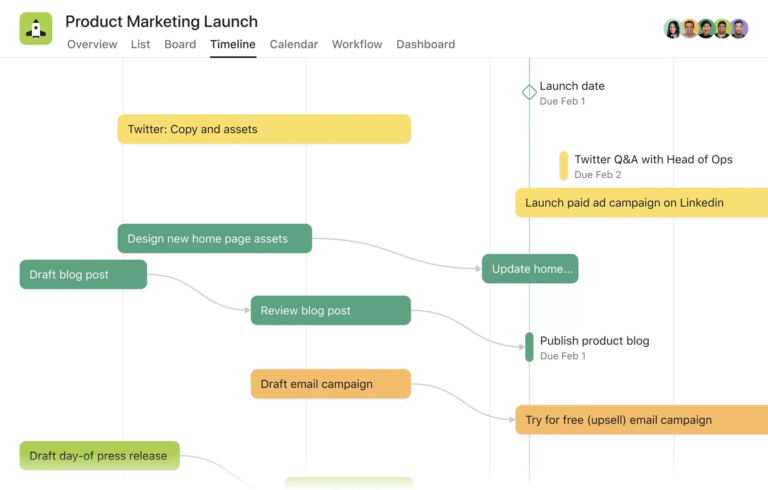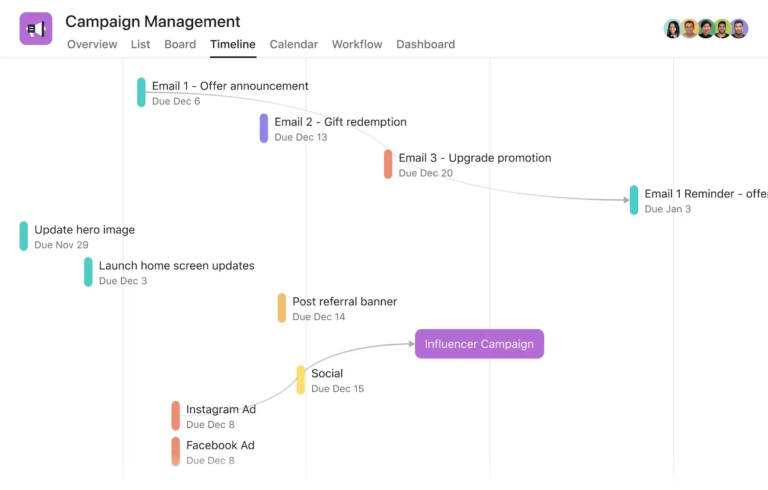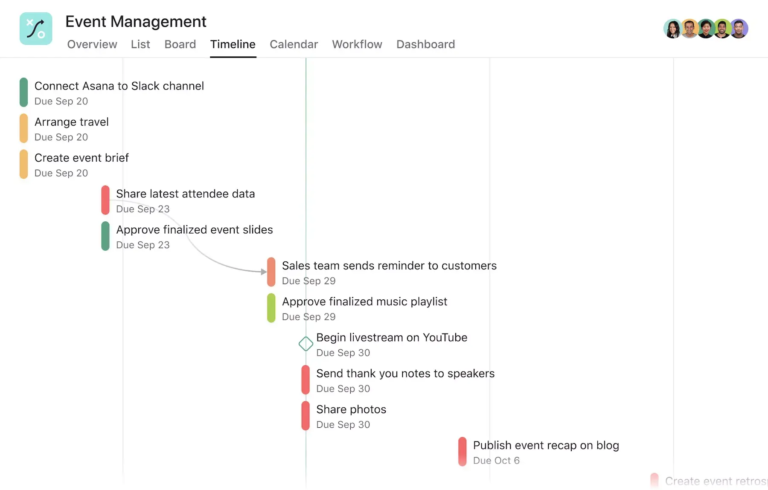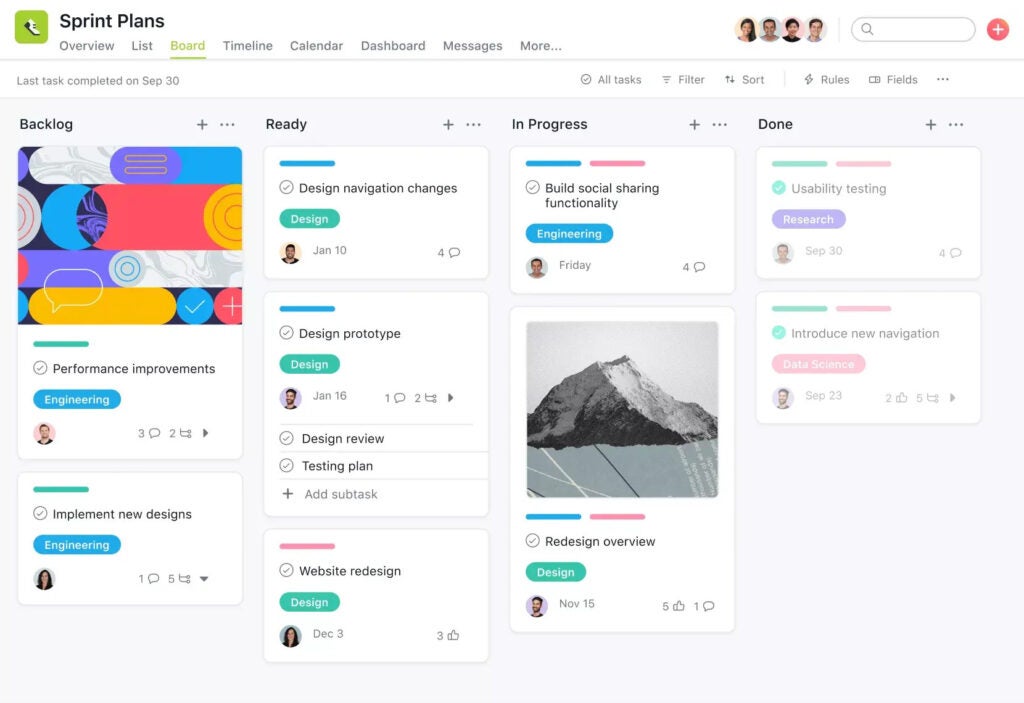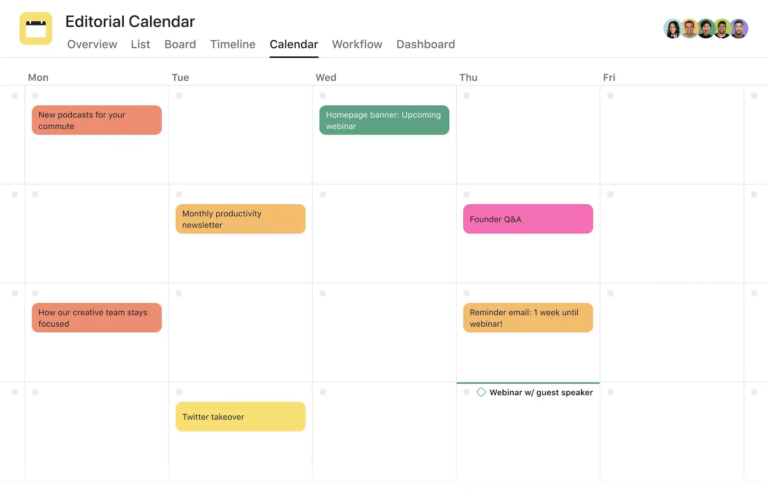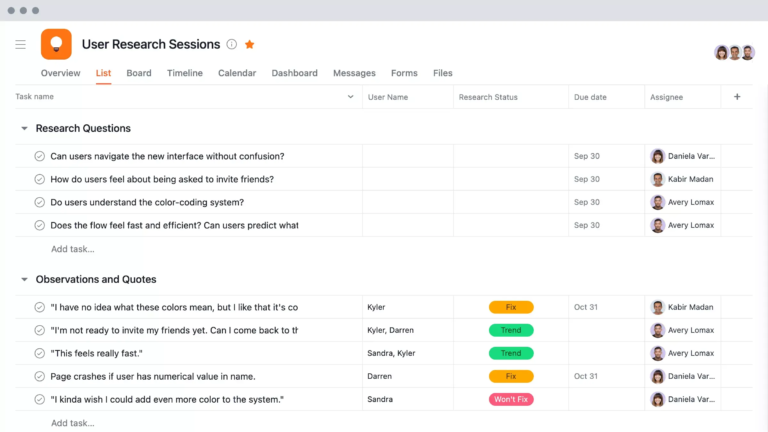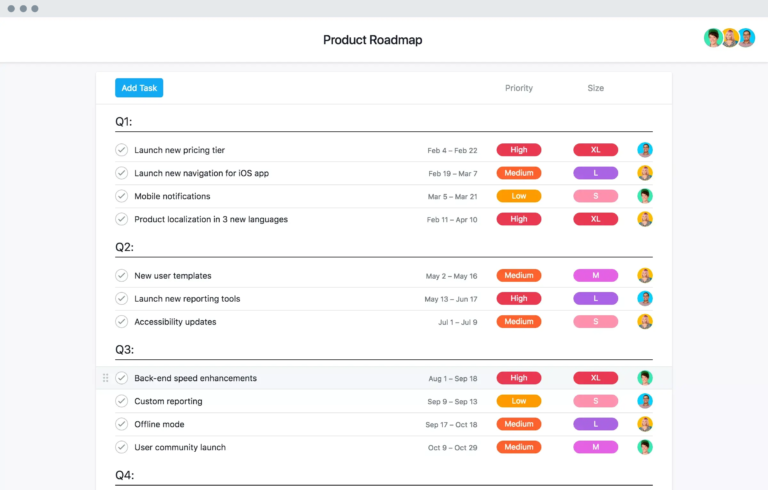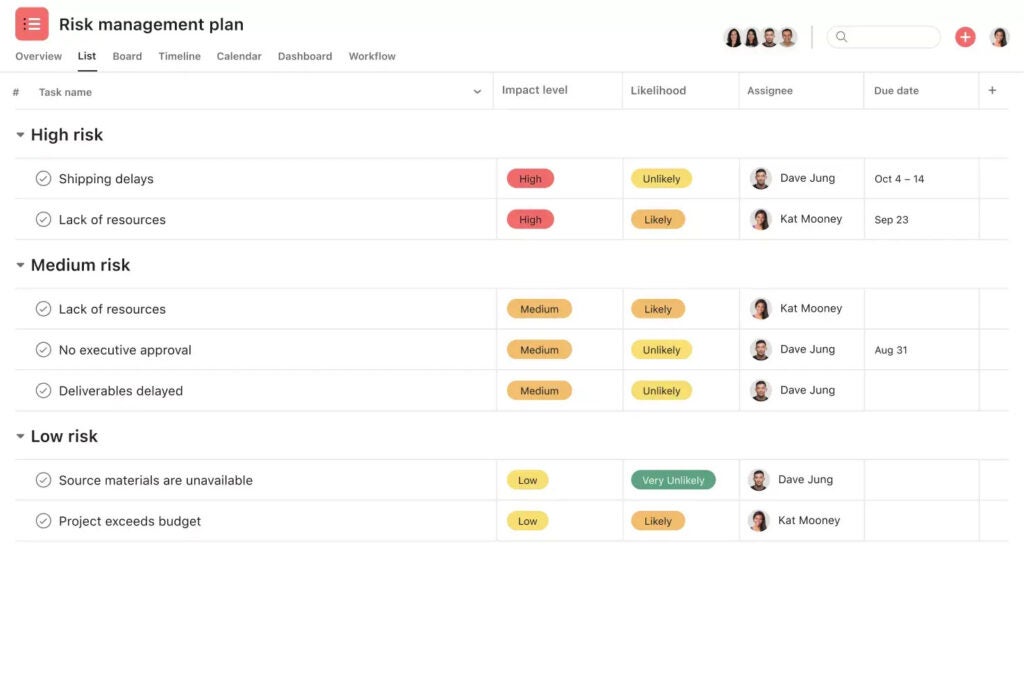
A project timeline is a visual tool that organizes tasks in chronological order. Find the best project timeline templates to easily manage your next project.
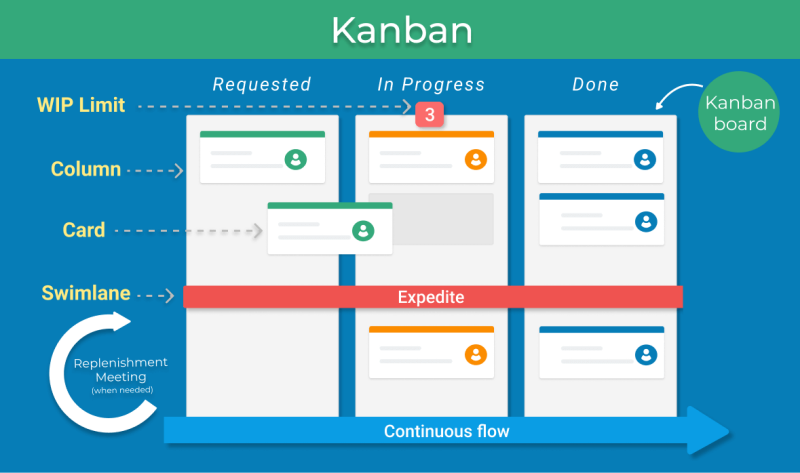
Kanban is an effective project management method. Find the top Kanban project management books to help manage projects and deliver products.

To prepare yourself for success and advancement, studying for the Project Management Professional (PMP) certification should be a top priority.

These top project management books from seasoned authors combine theory, best practices, and real-world examples to guide your career.
In 2001, a group of software experts crafted the Manifesto for Agile Software Development to offer a new approach in solving an old software development problem. The problem is having too much to do and not having enough time to do it. The Agile approach or methodology created a new mindset, that is best described…
A leadership style is a method by a person or organization to provide direction, implement plans, and motivate other people. Leadership is commonly defined as the process of motivating a group of people to act toward the accomplishment of a common task. As there are several ways of motivating people, there are also several styles…

Discover the principles and benefits of agile project management. Learn how to implement agile methodologies for efficient project delivery.

KEY TAKEAWAYS Today’s software solutions provide a range of valuable tools and features for project management. Google Sheets is an excellent example of a system that thrives as both a data analysis tool and a powerful resource for project managers. In this article, we will take a closer look at the capabilities and features Google…

KEY TAKEAWAYS Going over budget while managing a project can be a dreadful situation for project managers and business stakeholders alike. In this guide, we’ll dive into the specifics of this issue and strategies on how to deal with project cost overruns. How to Deal with Project Cost Overruns and Avoid Future Issues Navigating the…

Knowing what signs to look for to prevent failed projects is the responsibility of the project manager. Let’s take a deeper look at project failure, and identify some actionable steps you can take to avoid it.

ProjectLibre is considered one of the best open-source project management tools. Explore Part 1 of our 5-part ProjectLibre tutorial series today.

If you want to get into software project management, it’s essential to understand what makes this profession different from other project management jobs: What does a project manager do in software development? How is it different compared to the standard project management job description?

Learn how to become a successful freelance project manager with steps to find clients, set rates, manage workflows, and grow your business.
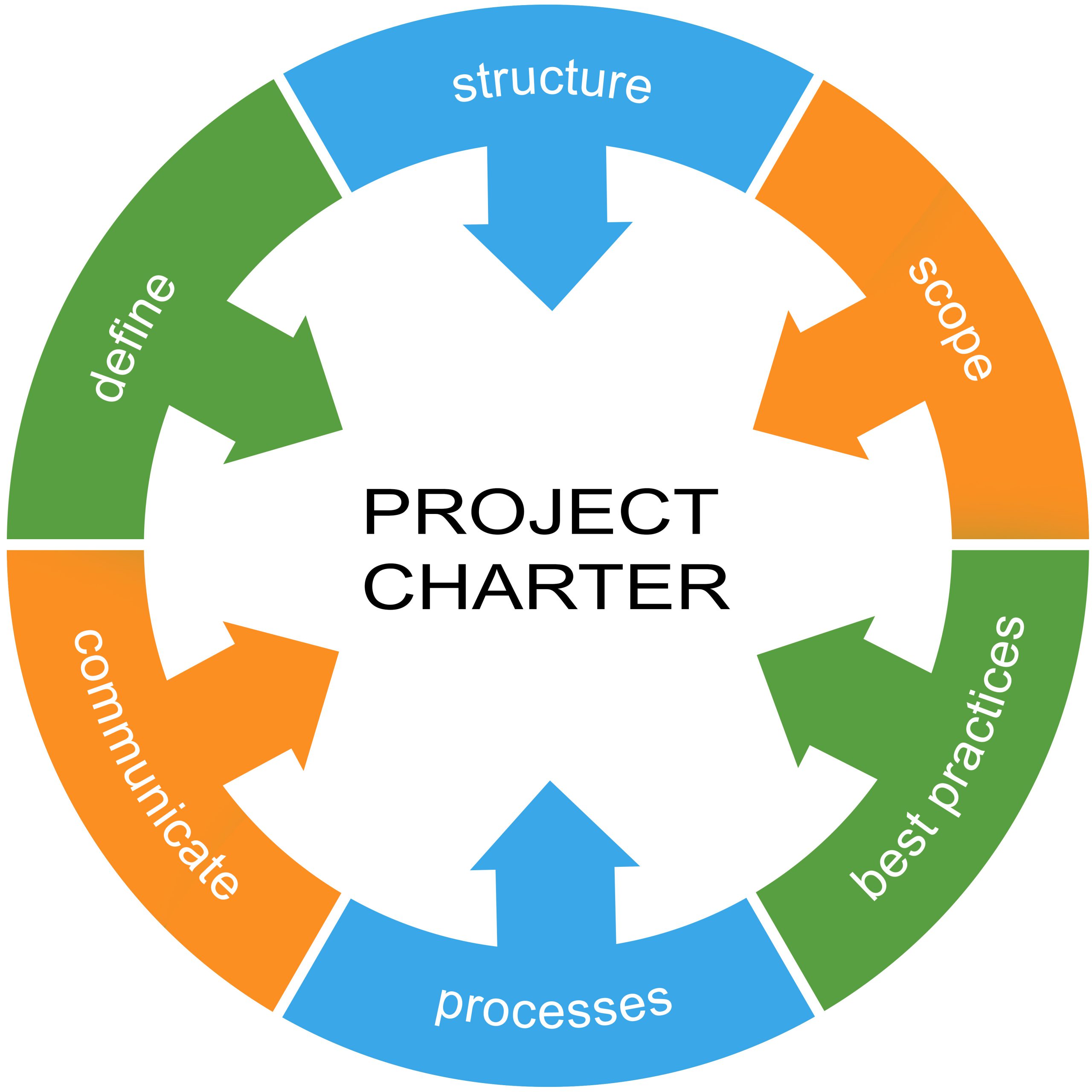
A project charter document outlines a project’s purpose, goals, and stakeholders. Learn why project charters are important for successful project delivery.
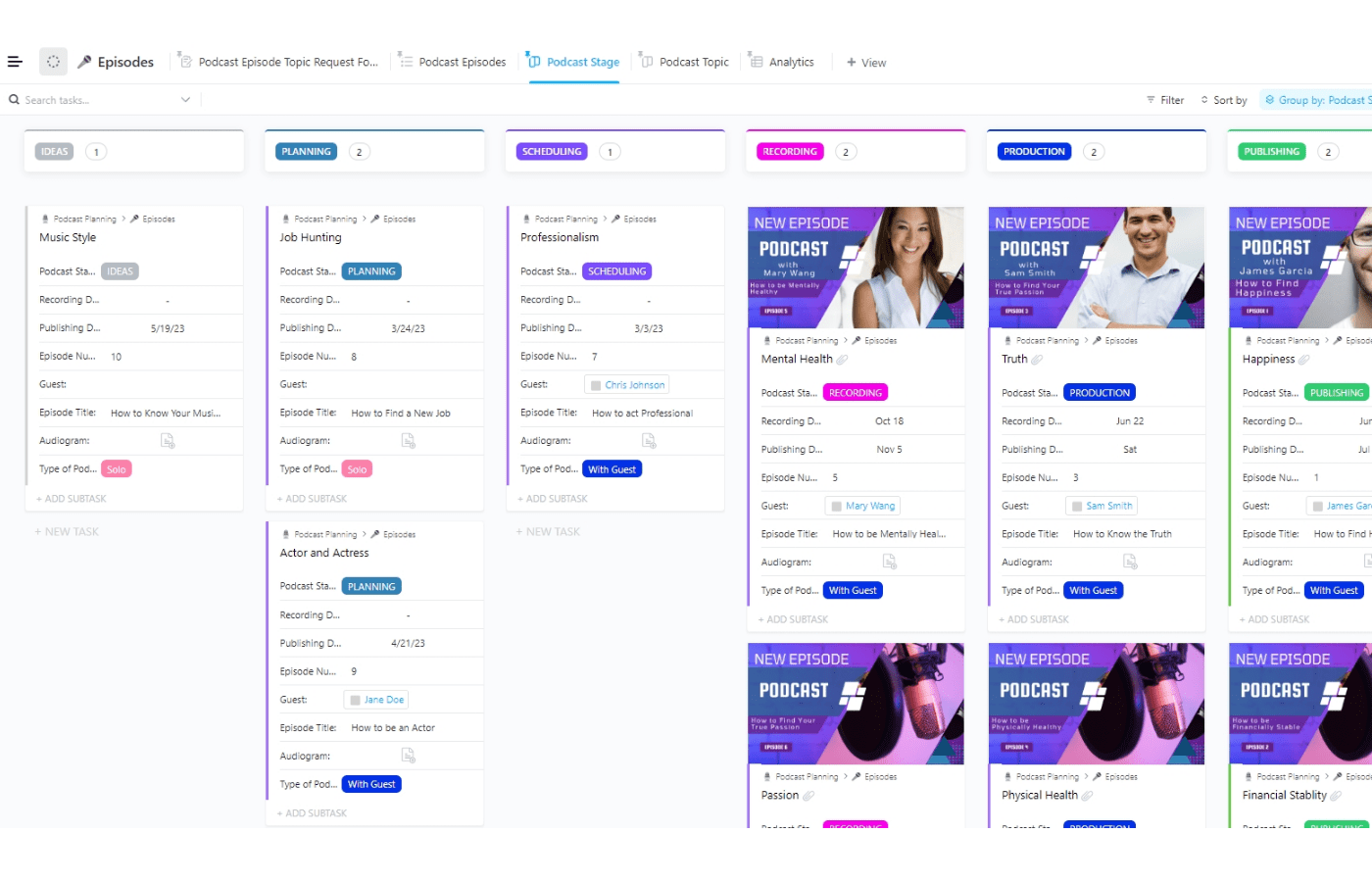
Assign and manage tasks effectively, track progress, and reduce bottlenecks as you prepare your next podcast episode with these podcast planning templates.

I build content plans for a living, so I know a strong editorial calendar is more than a list of dates. It’s your team’s shared roadmap — bringing structure, visibility, and momentum to every project. From one-off campaigns to full content pipelines, the right template makes that magic happen. These three editorial calendar templates can…

See if RACI Matrix in Agile is useful or not to clarify roles, improve collaboration, and streamline decision-making for better project success.

Outlining the details and defining factors is crucial at the start of any project. Explore how project scope management affects project success.

Explore how the best marketing project management software like Jira, ClickUp, and Nifty can guide you toward smarter campaign executions.

The best project management software for 2025 with our expert comparison of top tools. Explore features, pricing, and the best picks for your team!

Looking for free project management software? Here’s our list of the top free tools to help you plan, organize, and execute projects in 2023.

Discover the features and benefits of Zoho Projects software. Read our review to see if it’s the right fit for your project management.
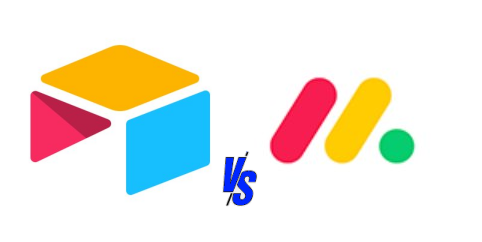
Key takeaways In the rapidly evolving world of project management tools, Airtable and monday.com stand out as two of the most popular and powerful platforms. Both are designed to streamline workflows, boost team collaboration, and improve productivity — yet each tool offers unique features that cater to different types of businesses and project management styles.…

Key takeaways Trello is a visual collaboration tool, which offers a flexible and intuitive platform for managing projects of all sizes. By breaking down projects into manageable components — boards, lists, and cards — Trello ensures that every detail is tracked and progress is transparent. This guide delves into the core elements of Trello and…

Wunderlist was a free app for managing to-do lists online, but it is no longer in service. Consider these alternatives now.

Are you looking for a Microsoft Project alternative for project & portfolio management? Compare today’s top MS Project alternatives now.

Looking for an alternative to Nifty? Tackle project management without the stress and check out these 7 Nifty project management alternatives.

Like any software, monday.com has its limitations. And for one reason or another, it may not be the best tool for your needs. Let’s look into the best monday CRM alternatives.

Teams looking for a monday.com alternative should take note of both the features that make this software valuable, as well as missing or more expensive features.
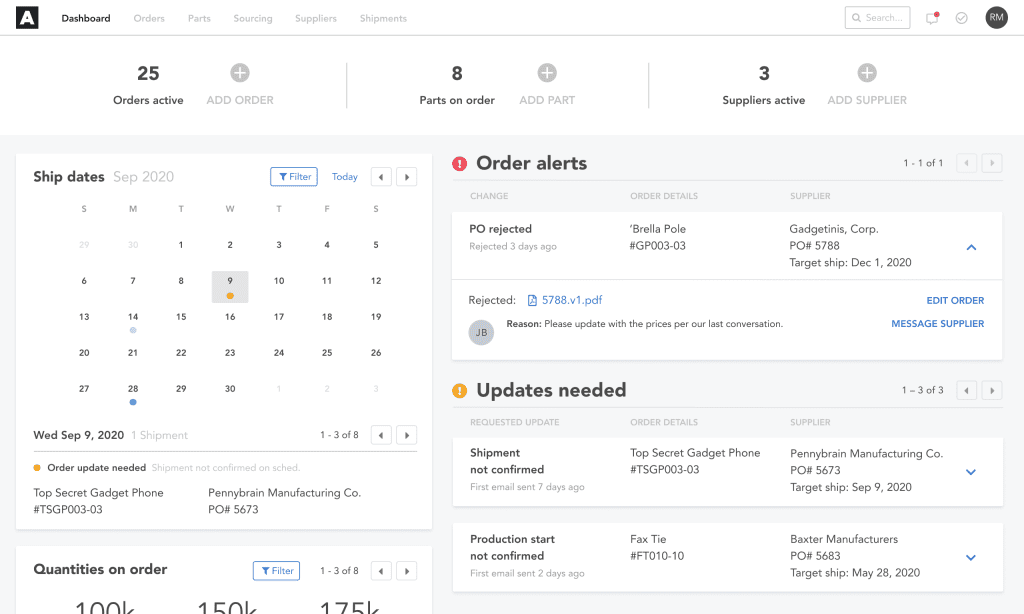
Supply chain management (SCM) is a multifaceted process that tracks services or goods as they traverse a network of business partners. The SCM process begins with a supplier fulfilling a business request for raw components. Then, as the raw components are converted to goods or services, SCM software works as a collaborative application, tracking the…

The best project management software for 2025 with our expert comparison of top tools. Explore features, pricing, and the best picks for your team!

Finding a nonprofit project management solution that balances affordability with capability can be a challenge. To ease the weight of the task, we narrowed the field to the seven best options for project management software for nonprofits.

Efficient oil and gas project management software needs to specifically cater to the industry’s complex operational requirements because failure to manage projects in this field can cause massive risks to its stakeholders. Read on to find out our picks for the best tools for the job.

A dedicated scheduling tool focuses on attaching dates and times to project milestones, then keeping all parties synced on what’s due to whom and when. Here are our 5 picks for the best project scheduling software are:

By employing the right project management tools, creative projects are executed with greater efficiency, ensuring that deadlines are met, budgets are adhered to, and overall quality is maintained. Here is a list of the top creative project management software you can use for your next project.

Looking for the best project management software for individuals? Here’s our list of the top 6 project management tools to help you prioritize tasks efficiently.
- Tools
- Books Link to Creating Project Timelines: Step-by-Step Beginner’s Guide
 Creating Project Timelines: Step-by-Step Beginner’s Guide
Creating Project Timelines: Step-by-Step Beginner’s GuideA project timeline is a visual tool that organizes tasks in chronological order. Find the best project timeline templates to easily manage your next project.
Link to Top 5 Kanban Project Management Books Top 5 Kanban Project Management Books
Top 5 Kanban Project Management BooksKanban is an effective project management method. Find the top Kanban project management books to help manage projects and deliver products.
Link to Best PMP Exam Prep Books Best PMP Exam Prep Books
Best PMP Exam Prep BooksTo prepare yourself for success and advancement, studying for the Project Management Professional (PMP) certification should be a top priority.
Link to The Best Project Management Books for Everybody The Best Project Management Books for Everybody
The Best Project Management Books for EverybodyThese top project management books from seasoned authors combine theory, best practices, and real-world examples to guide your career.
Link to Best Agile Project Management BooksBest Agile Project Management BooksIn 2001, a group of software experts crafted the Manifesto for Agile Software Development to offer a new approach in solving an old software development problem. The problem is having too much to do and not having enough time to do it. The Agile approach or methodology created a new mindset, that is best described…
Link to Books and Resources for Different Leadership StylesBooks and Resources for Different Leadership StylesA leadership style is a method by a person or organization to provide direction, implement plans, and motivate other people. Leadership is commonly defined as the process of motivating a group of people to act toward the accomplishment of a common task. As there are several ways of motivating people, there are also several styles…
- Training Link to What Is Agile Project Management? An Ultimate Guide for Flexible & Smarter Teams
 What Is Agile Project Management? An Ultimate Guide for Flexible & Smarter Teams
What Is Agile Project Management? An Ultimate Guide for Flexible & Smarter TeamsDiscover the principles and benefits of agile project management. Learn how to implement agile methodologies for efficient project delivery.
Link to Mastering Project Management with Google Sheets: Guide & Templates Mastering Project Management with Google Sheets: Guide & Templates
Mastering Project Management with Google Sheets: Guide & TemplatesKEY TAKEAWAYS Today’s software solutions provide a range of valuable tools and features for project management. Google Sheets is an excellent example of a system that thrives as both a data analysis tool and a powerful resource for project managers. In this article, we will take a closer look at the capabilities and features Google…
Link to How to Deal with Project Cost Overruns (+ Prevention Tips) How to Deal with Project Cost Overruns (+ Prevention Tips)
How to Deal with Project Cost Overruns (+ Prevention Tips)KEY TAKEAWAYS Going over budget while managing a project can be a dreadful situation for project managers and business stakeholders alike. In this guide, we’ll dive into the specifics of this issue and strategies on how to deal with project cost overruns. How to Deal with Project Cost Overruns and Avoid Future Issues Navigating the…
Link to 12 Reasons Why Projects Fail & Solutions for Them 12 Reasons Why Projects Fail & Solutions for Them
12 Reasons Why Projects Fail & Solutions for ThemKnowing what signs to look for to prevent failed projects is the responsibility of the project manager. Let’s take a deeper look at project failure, and identify some actionable steps you can take to avoid it.
Link to ProjectLibre Tutorial Part 1: Creating and Setting Up Your First Project ProjectLibre Tutorial Part 1: Creating and Setting Up Your First Project
ProjectLibre Tutorial Part 1: Creating and Setting Up Your First ProjectProjectLibre is considered one of the best open-source project management tools. Explore Part 1 of our 5-part ProjectLibre tutorial series today.
Link to Project Manager Roles and Responsibilities for Software Projects Project Manager Roles and Responsibilities for Software Projects
Project Manager Roles and Responsibilities for Software ProjectsIf you want to get into software project management, it’s essential to understand what makes this profession different from other project management jobs: What does a project manager do in software development? How is it different compared to the standard project management job description?
- Articles Link to How to Become a Freelance Project Manager in 2025
 How to Become a Freelance Project Manager in 2025
How to Become a Freelance Project Manager in 2025Learn how to become a successful freelance project manager with steps to find clients, set rates, manage workflows, and grow your business.
Link to What is a Project Charter? Complete Guide & Examples What is a Project Charter? Complete Guide & Examples
What is a Project Charter? Complete Guide & ExamplesA project charter document outlines a project’s purpose, goals, and stakeholders. Learn why project charters are important for successful project delivery.
Link to 10 Podcast Planning Templates to Help You Produce Your Next Episode 10 Podcast Planning Templates to Help You Produce Your Next Episode
10 Podcast Planning Templates to Help You Produce Your Next EpisodeAssign and manage tasks effectively, track progress, and reduce bottlenecks as you prepare your next podcast episode with these podcast planning templates.
Link to 3 Editorial Calendar Templates You’ll Actually Use (Picked by a Content Director) 3 Editorial Calendar Templates You’ll Actually Use (Picked by a Content Director)
3 Editorial Calendar Templates You’ll Actually Use (Picked by a Content Director)I build content plans for a living, so I know a strong editorial calendar is more than a list of dates. It’s your team’s shared roadmap — bringing structure, visibility, and momentum to every project. From one-off campaigns to full content pipelines, the right template makes that magic happen. These three editorial calendar templates can…
Link to Raci Matrix in Agile Project Management Raci Matrix in Agile Project Management
Raci Matrix in Agile Project ManagementSee if RACI Matrix in Agile is useful or not to clarify roles, improve collaboration, and streamline decision-making for better project success.
Link to What is Project Scope? | Best Project Scope Management What is Project Scope? | Best Project Scope Management
What is Project Scope? | Best Project Scope ManagementOutlining the details and defining factors is crucial at the start of any project. Explore how project scope management affects project success.
- Software by Category Link to 10 Best Marketing Project Management Software to Plan Campaigns Faster
 10 Best Marketing Project Management Software to Plan Campaigns Faster
10 Best Marketing Project Management Software to Plan Campaigns FasterExplore how the best marketing project management software like Jira, ClickUp, and Nifty can guide you toward smarter campaign executions.
Link to 10 Best Project Management Software for 2025 by Experts 10 Best Project Management Software for 2025 by Experts
10 Best Project Management Software for 2025 by ExpertsThe best project management software for 2025 with our expert comparison of top tools. Explore features, pricing, and the best picks for your team!
Link to 10 Best Free Project Management Tools to Boost Team Efficiency in 2025 10 Best Free Project Management Tools to Boost Team Efficiency in 2025
10 Best Free Project Management Tools to Boost Team Efficiency in 2025Looking for free project management software? Here’s our list of the top free tools to help you plan, organize, and execute projects in 2023.
Link to Zoho Projects Software Review: Features, Pricing, Pros & Cons Zoho Projects Software Review: Features, Pricing, Pros & Cons
Zoho Projects Software Review: Features, Pricing, Pros & ConsDiscover the features and benefits of Zoho Projects software. Read our review to see if it’s the right fit for your project management.
Link to Airtable vs Monday Comparison: Which Is Best for You? Airtable vs Monday Comparison: Which Is Best for You?
Airtable vs Monday Comparison: Which Is Best for You?Key takeaways In the rapidly evolving world of project management tools, Airtable and monday.com stand out as two of the most popular and powerful platforms. Both are designed to streamline workflows, boost team collaboration, and improve productivity — yet each tool offers unique features that cater to different types of businesses and project management styles.…
Link to What Is Trello? Key Features, Pricing, & How to Use What Is Trello? Key Features, Pricing, & How to Use
What Is Trello? Key Features, Pricing, & How to UseKey takeaways Trello is a visual collaboration tool, which offers a flexible and intuitive platform for managing projects of all sizes. By breaking down projects into manageable components — boards, lists, and cards — Trello ensures that every detail is tracked and progress is transparent. This guide delves into the core elements of Trello and…
- Alternatives & Competitors Link to Best Wunderlist Alternatives & Replacements
 Best Wunderlist Alternatives & Replacements
Best Wunderlist Alternatives & ReplacementsWunderlist was a free app for managing to-do lists online, but it is no longer in service. Consider these alternatives now.
Link to Best Microsoft Project Alternatives & Competitors Best Microsoft Project Alternatives & Competitors
Best Microsoft Project Alternatives & CompetitorsAre you looking for a Microsoft Project alternative for project & portfolio management? Compare today’s top MS Project alternatives now.
Link to 7 Best Nifty Alternatives for Your Project Management Needs 7 Best Nifty Alternatives for Your Project Management Needs
7 Best Nifty Alternatives for Your Project Management NeedsLooking for an alternative to Nifty? Tackle project management without the stress and check out these 7 Nifty project management alternatives.
Link to Best monday CRM Alternatives & Competitors Best monday CRM Alternatives & Competitors
Best monday CRM Alternatives & CompetitorsLike any software, monday.com has its limitations. And for one reason or another, it may not be the best tool for your needs. Let’s look into the best monday CRM alternatives.
Link to Best monday.com Alternatives & Competitors Best monday.com Alternatives & Competitors
Best monday.com Alternatives & CompetitorsTeams looking for a monday.com alternative should take note of both the features that make this software valuable, as well as missing or more expensive features.
Link to Top Supply Chain Solutions & Software Top Supply Chain Solutions & Software
Top Supply Chain Solutions & SoftwareSupply chain management (SCM) is a multifaceted process that tracks services or goods as they traverse a network of business partners. The SCM process begins with a supplier fulfilling a business request for raw components. Then, as the raw components are converted to goods or services, SCM software works as a collaborative application, tracking the…
- Buyers Guide Link to 10 Best Project Management Software for 2025 by Experts
 10 Best Project Management Software for 2025 by Experts
10 Best Project Management Software for 2025 by ExpertsThe best project management software for 2025 with our expert comparison of top tools. Explore features, pricing, and the best picks for your team!
Link to 7 Best Project Management Software for Nonprofits 7 Best Project Management Software for Nonprofits
7 Best Project Management Software for NonprofitsFinding a nonprofit project management solution that balances affordability with capability can be a challenge. To ease the weight of the task, we narrowed the field to the seven best options for project management software for nonprofits.
Link to 6 Best Oil and Gas Project Management Software 6 Best Oil and Gas Project Management Software
6 Best Oil and Gas Project Management SoftwareEfficient oil and gas project management software needs to specifically cater to the industry’s complex operational requirements because failure to manage projects in this field can cause massive risks to its stakeholders. Read on to find out our picks for the best tools for the job.
Link to 5 Best Project Scheduling Software 5 Best Project Scheduling Software
5 Best Project Scheduling SoftwareA dedicated scheduling tool focuses on attaching dates and times to project milestones, then keeping all parties synced on what’s due to whom and when. Here are our 5 picks for the best project scheduling software are:
Link to 5 Best Creative Project Management Software 5 Best Creative Project Management Software
5 Best Creative Project Management SoftwareBy employing the right project management tools, creative projects are executed with greater efficiency, ensuring that deadlines are met, budgets are adhered to, and overall quality is maintained. Here is a list of the top creative project management software you can use for your next project.
Link to 6 Best Project Management Software for Individuals 6 Best Project Management Software for Individuals
6 Best Project Management Software for IndividualsLooking for the best project management software for individuals? Here’s our list of the top 6 project management tools to help you prioritize tasks efficiently.
- Templates
- Best PM Software
